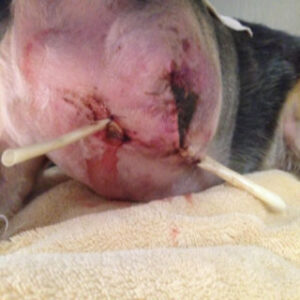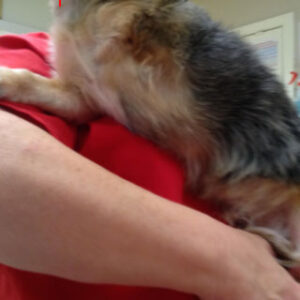Adjunctive HBOT in the Management of a Septic, Non-Healing Wound
A 6 year old small breed male canine was referred for treatment of a draining, infected, open wound associated with a dog fight, and amputation at the mid humerous two months prior to presentation (Image 1). The owner did not wish to proceed with another surgery. On the day of presentation, wound culture revealed Enterococcus ssp. sensitive to amoxicillin and clavulinic acid.
The drains were removed, and an E Collar was placed. A multi-week course of the indicated antibiotic, pain management medications, HBOT, and Artemis NRT laser therapy were begun. Over a two-month period, 18 individual days of BID HBOT sessions for one hour at 1.5 ATA were given, along with once daily Artemis NRT laser therapy sessions on the days of HBOT as an outpatient.
The drainage resolved, and by two months after initial referral, the wound had closed (Image 2).
A study in Canada revealed that long term medical costs for treatments of human patients with delayed healing foot ulcers associated with Diabetes Mellitus were actually lower when adjunctive HBOT was added to standard wound care therapies.
(Reference, Chuck, AW, et al, “Cost effectiveness and budget impact of adjunctive hyperbaric oxygen therapy for diabetic foot ulcers, Int J Technol Assess Health Care 2008 Spring; 24(2): 178-83).

For more information about this HBOT case and many more indications, please click here and you will be promptly contacted by Dr. Ronald Lyman, DVM, Diplomate ACVIM, and Medical Director of Veterinary Hyperbaric Safety.


